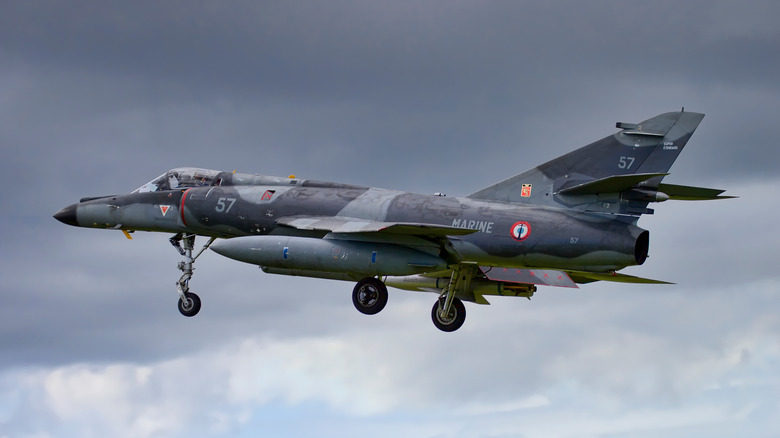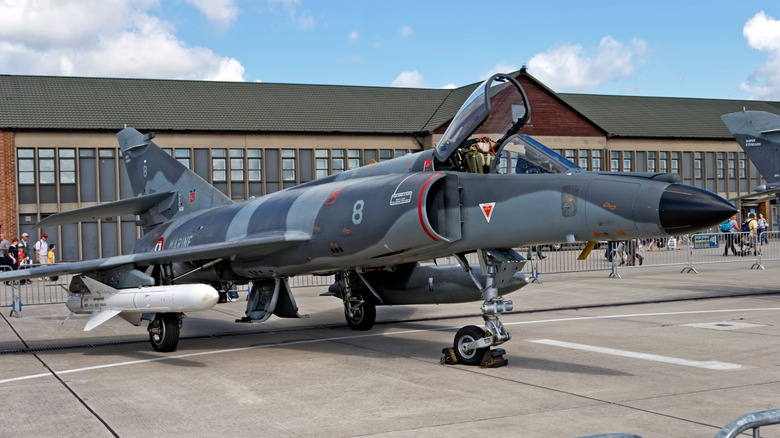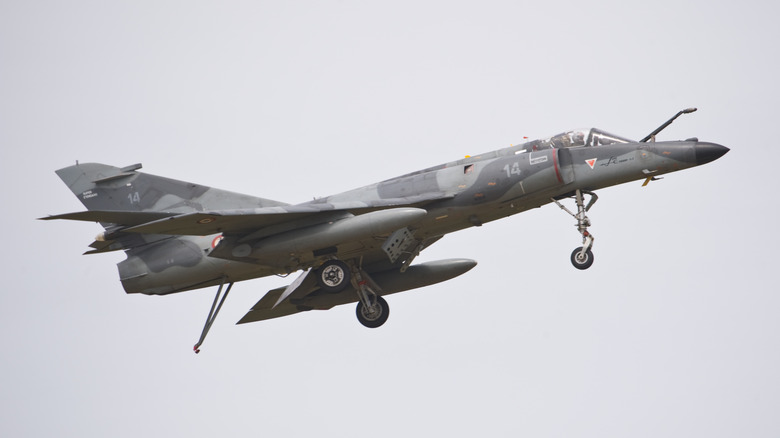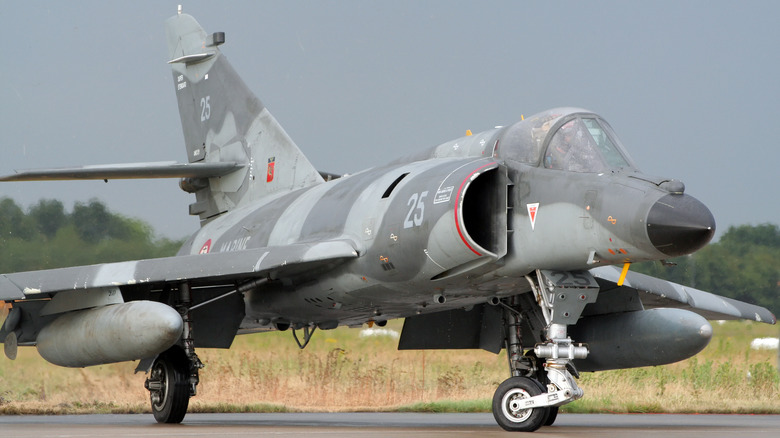The Incredible Features Of The First French Fighter Jet With Modern Weapons
France's military history is long and full of heroism. In the modern age of warfare, France has remained an unflinching ally of the United States and other western nations. In the wake of World War II, France quickly joined the U.S., Britain, and nine other countries as founding members of the North Atlantic Treaty Organization (NATO) in 1949.
Since then, French military preparedness has been a key focus for the nation. This should come as no surprise, given the ease with which the Nazi armed forces were able to decimate the French army, one that France 24's Stéphanie Trouillard calls "one of the most powerful in the world," at the time of its defeat.
In speaking with historian Michaël Bourlet, it becomes clear that French defeat came as a result of backwards thinking after the previous war. "Commanders were too focused on lessons from the First World War; they couldn't think about the actual war they had to wage in the present. They were unable to adapt," Bourlet tells Trouillard.
Adaptation and preparation are therefore central in ongoing national defense efforts. This can be seen in the adoption of the first combat jet that was entered into French service: the Super-Étendard. This fighter aircraft was the first French military jet sporting inertial navigation/attack systems, and replaced the Crusader, Étendard IV, and Alizé aircrafts in the French military arsenal.
The Super-Étendard is an all-French addition
French naval aviation strategists initially considered the purchase or licensed construction of A-4M Skyhawks or A-7 Corsair II aircraft — both American-made options. Both jets offered forward strike capabilities, with the Corsair acting as a bombing tool, and the Skyhawk performing close air support and bombing duties. The Corsair II, in particular, was the first aerial fighter to bring comprehensive Heads Up Display capabilities to the cockpit, and was outfitted with an immense arsenal of navigational and targeting tools.
However, the decision was ultimately made to produce a French combat aircraft to augment French carriers. This would impact the French Navy immensely, with a great deal of pride emanating from the ability to outfit the force with an all-French lineup of weapons platforms.
Indeed, the Super-Étendard began life as something bridging the gap between these two foreign airborne fighters (albeit sometimes through gradual update projects). Its radar and navigational systems were augmented by an onboard UAT-40 central computer, and later upgrades would bring vast enhancements to the radar capabilities (essentially doubling the range with a new Thomson-CSF Anemone system).
During the 2000s, French modernization efforts brought a redesign to the cockpit with added HOTAS (hands on throttle-and-stick) controls, and night vision visibility improvements.
The aircraft has served in a wide range of combat roles
Entering service in 1978, the Super-Étendard wasn't initially tasked with direct aerial combat operations, and was equipped primarily with the Aérospatiale AM 39 Exocet anti-ship missile. The aircraft utilizes a Snecma Atar 8K-50 turbojet engine that produced 49 kN (or 11,025 foot-pounds) of force. It was outfitted with a swept design for the wings and tailplane, with folding wings exhibiting a roughly 45-degree sweepback.
The craft was identified as a major asset to the French Navy early on, and a variety of improvements were carried out, starting in 1987, to continually redefine the Super-Étendard's combat role and versatility. It's been nicknamed the "Swiss army knife" due to its evolving functionalities; from Naval assault and ground bombing, to refueling and reconnaissance.
In this sense, it's much like the American S-3B Viking that entered service to hunt Soviet submarines, only to grow alongside the Navy's aerial mission over the following decades. In 1997, the aircraft underwent it's "Standard 3" update, adding laser-guided weapons systems to the vessel. The aircraft has long been capable of carrying nuclear armaments as well.
In the '90s, Super-Étendards were outfitted with new launch options, allowing for air-launched nuclear missiles to add to or replace gravity bomb deployment within this component of the arsenal.
Super-Étendards have flown over numerous theaters and under multiple national banners
The aircraft has not only served the French Navy effectively for many years, but it's also been the go-to air asset for some of the most important tasks faced throughout this time. The Super-Étendard's first combat missions occurred during Operation Olifant over Lebanon in 1983 and '84.
Perhaps most prominently, they were used in bombing a Hezbollah position after the Drakkar attack. The Super-Étendard was also deployed during Yugoslavian and Kosovo conflicts from 1993-'95 and 1998-'99, respectively, as well as in the Iran-Iraq War in 1988. Later, they would serve the French military over Afghanistan, Libya, Syria, and again in Iraq.
However, the French Navy isn't the only armed service Super-Étendards have added military might to. In 1979, Argentina ordered 14 Super-Étendards for use on its aircraft carrier — but the full delivery was delayed as a result of the Falklands War in 1982. The aircraft was also loaned to the Iraqi Air Force while the outfit waited for a delivery of other fighter jets during the early stages of the Iran-Iraq War. Five Super-Étendards were delivered in 1983, and four returned in 1985 after the Iraqis had successfully integrated new Mirage F1 jets into their arsenal.



